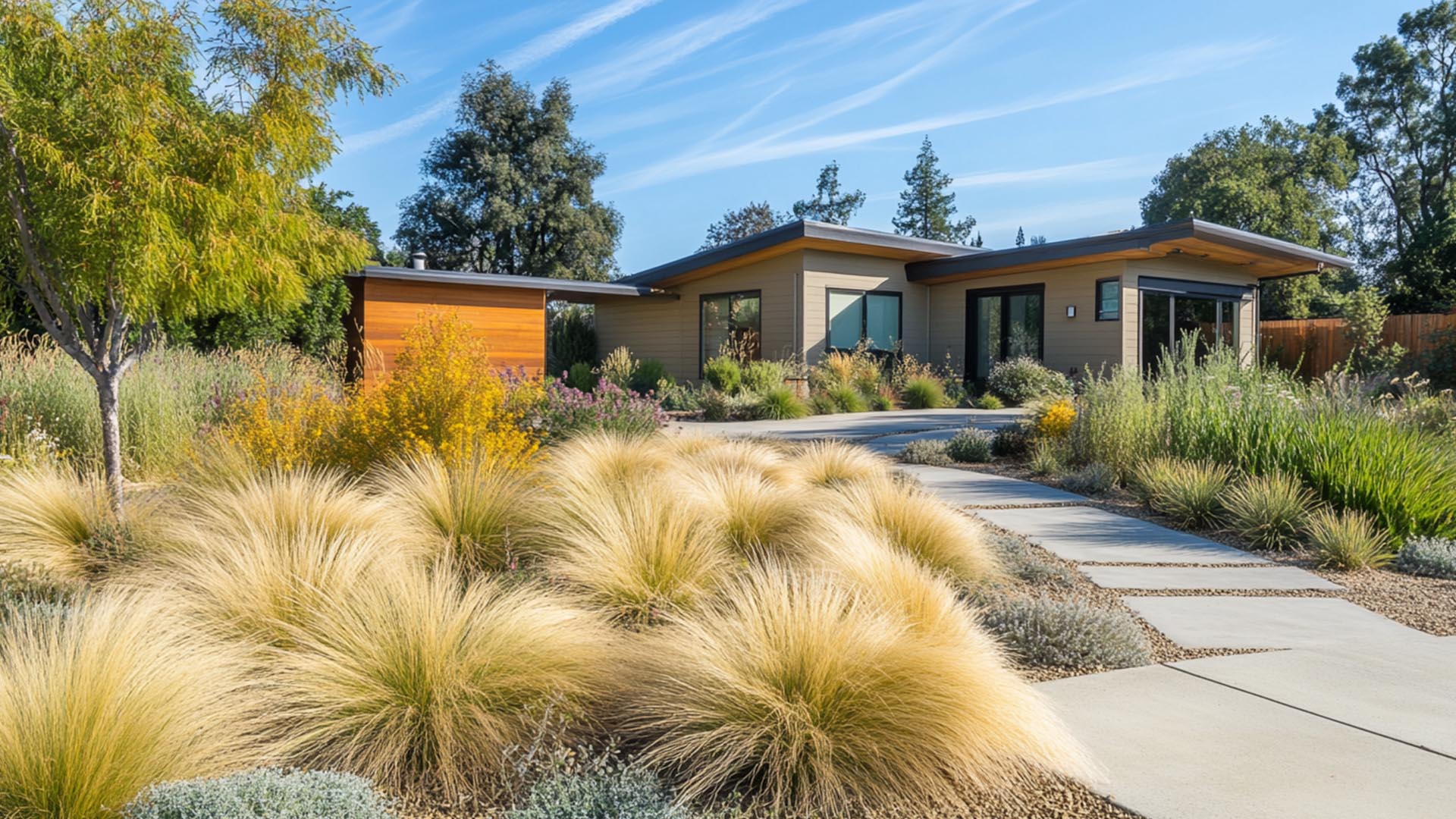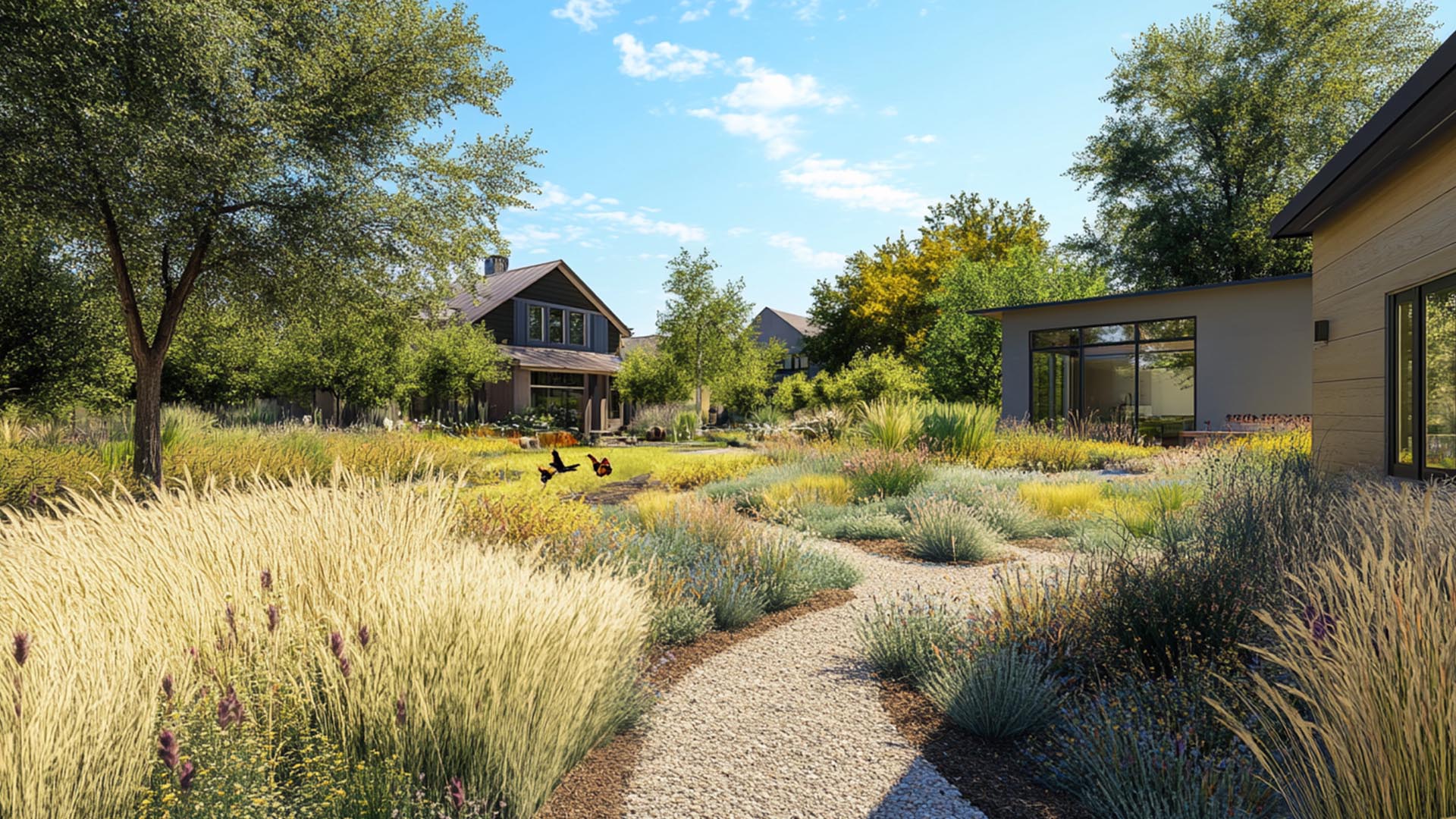If you’re looking to create a stunning outdoor space while minimizing your workload, consider transforming your yard with native grasses. A low-maintenance lawn can reduce the need for constant watering, mowing, and chemical treatments, allowing you to enjoy a beautiful landscape without the fuss. Native grasses are naturally adapted to your region’s climate, making them an excellent choice for a sustainable and low-maintenance lawn. They not only conserve water but also support local wildlife, enhance biodiversity, and require minimal upkeep compared to traditional grass lawns.
Benefits of Native Grasses
Choosing native grasses for your low-maintenance lawn can transform your yard in several ways. Firstly, these grasses are well-suited to your local environment, which means they’re more resilient to pests, diseases, and drought conditions. Traditional grass types often require heavy irrigation, regular mowing, and chemical fertilizers to thrive, but native grasses can flourish with far less care. This resilience translates to significant water savings, making them a great choice for those looking to conserve water and reduce utility bills.
In addition to water savings, native grasses support local ecosystems by providing food and shelter for birds, butterflies, and other beneficial wildlife. This can create a more vibrant and diverse environment in your backyard, enriching your gardening experience. By incorporating native grasses, you’re not only enhancing your landscape’s aesthetic appeal but also contributing to the health of local ecosystems.
Moreover, native grasses typically have deeper root systems than traditional grasses, which means they can access moisture from deeper soil layers. This characteristic makes them less reliant on frequent watering, particularly during dry spells. As a result, you’ll spend less time worrying about watering schedules and more time enjoying your outdoor space.
Designing Your Low-Maintenance Lawn
When designing a low-maintenance lawn with native grasses, start by researching which varieties thrive in your area. Grasses like buffalo grass, blue grama, and fescue are excellent options for different regions. Understanding the specific needs and characteristics of these grasses will help you make informed decisions that will benefit your lawn in the long term.
Once you’ve chosen the right types, consider the layout of your yard. Create a mix of open grassy areas and wildflower patches to enhance visual interest and biodiversity. Incorporating wildflowers not only adds color but also attracts pollinators, contributing to a healthier ecosystem.
Tip: Group your native grasses according to their height and texture for a visually appealing design that adds depth to your landscape. For instance, place taller grasses at the back of beds and shorter ones at the front to create layers. This arrangement will provide a more structured and organized appearance, while still maintaining a natural look.

Establishing Your Native Grass Lawn
Establishing a low-maintenance lawn with native grasses requires some initial effort but pays off in the long run. Start by preparing the soil, removing any existing turf, and loosening the ground. This preparation helps ensure that your native grasses have the best possible start. You can then sow seeds or plant plugs of your selected native grasses. When sowing seeds, be sure to follow the recommended seeding rates for each species, as this will help establish a dense and healthy lawn.
Make sure to water them adequately during the establishment phase, which typically lasts for a few weeks to a couple of months. While native grasses are drought-tolerant, they need consistent moisture during the establishment period to promote root growth. After this phase, they will require much less water, thanks to their deep root systems.
Once established, native grasses require minimal watering, especially during dry spells, as their roots can access moisture from the soil. Regular mowing will not be necessary; instead, occasional trimming may be all that’s required to keep your lawn looking tidy. This low-maintenance aspect is one of the most appealing features of native grasses, allowing you to spend less time on lawn care and more time enjoying your yard.
Maintenance Tips for Your Native Grass Lawn
Even though native grasses are low-maintenance, some care is still needed. Here are a few tips to ensure your lawn remains healthy and vibrant:
- Weed Control: Monitor for invasive weeds that may compete with your native grasses. Hand-pulling or targeted spot treatments can help manage them without disrupting the ecosystem. Keeping an eye on weed growth will ensure your native grasses have the space and resources they need to thrive.
- Seasonal Mowing: While frequent mowing is unnecessary, consider cutting back your grasses once a year in late winter or early spring to promote healthy regrowth. This practice will help maintain the visual appeal of your lawn and encourage fresh growth when the weather warms up.
- Soil Health: Occasionally aerate your lawn and add organic mulch to enhance soil quality and provide nutrients. Healthy soil is crucial for supporting the growth of your native grasses, so taking care of it will contribute to the overall health of your lawn.
- Fertilization: Native grasses generally require little to no fertilization. If needed, use organic fertilizers that align with sustainable practices. Over-fertilizing can lead to excessive growth and may make your grasses more susceptible to pests and diseases.
Transforming your yard with native grasses offers a beautiful and sustainable alternative to traditional lawns. By creating a low-maintenance lawn, you can enjoy a thriving outdoor space that not only conserves water and reduces upkeep but also supports local wildlife and enhances the natural beauty of your environment.
Native grasses provide an excellent solution for homeowners looking to reduce their environmental impact while still enjoying a stunning landscape. So why not consider making the switch? With a little planning and initial effort, you can create a vibrant and diverse yard that reflects the beauty of your local ecosystem. Embrace the beauty of native grasses and experience the joy of a low-maintenance lawn that benefits both you and the environment.
